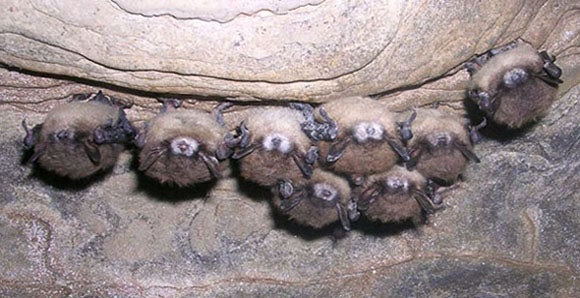Fungus-coated bats are spreading deadly disease in Washington state’s San Juan Island National Historical Park, according to park officials.
Three Yuma Myotis bats tested positive for the fungus that causes Pseudogymnoascus destructans, or white-nose syndrome.
The small brown bats had been living in a wooden “bat box” at the island’s English Camp, the location of a park visitor center and a historic military site.
“Any new detection [of the fungus] or white-nose syndrome is worrisome because bats are vital for healthy ecosystems,” the National Park Service said in a statement.
White-nose syndrome develops when the fungus invades their skin cells. It appears as white fuzz on their faces and wings. Infected bats can become dehydrated and die as a result of the disease.
The fuzz indicates that the syndrome has progressed and that the animals are experiencing life-threatening effects including loss of electrolytes.
White-nose syndrome primarily spreads through bat-to-bat contact, and does not cause illness in humans. However, humans are able to spread the fungus to new places through spores on clothing and shoes.
The disease has killed millions of bats across North America since it was initially detected in 2006 in New York.
White-nose syndrome has been detected in most states, and cases were reported in several Southern California counties last year.

Infection has resulted in the decline of multiple species, including in little brown bats, northern long-eared bats, and tri-colored bats, which declined by more than 90 percent across the eastern U.S. by 2018.
This is the first documented case in San Juan County, but not in the state. The first positive case was reported in Washington in 2016.
San Juan Island National Historical Park is home to 10 out of the 14 known species of bats in Washington state.
Bats are critical pollinators, contributing approximately $3.7 billion worth of insect pest control for farmers each year. Bat poop, called guano, can also be used as fertilizer to improve soil health.

Scientists regularly monitor bats when they emerge from hibernation each spring to test for the fungus.
If people see dead or injured bats while they are in the park, biologists say they should report the deaths to park personnel but “never touch or pick up a bat.”
All gear and clothing should be decontaminated after visiting a cave or other bat habitat to reduce the risk of spread.
“Although white-nose syndrome does not cause illness in humans, a small percentage of bats can be infected with other dangerous diseases, such as rabies,” they said.







